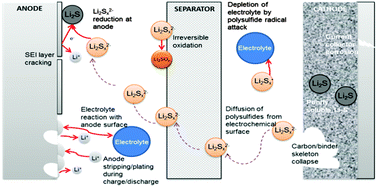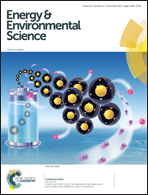Lithium sulfur batteries, a mechanistic review
Abstract
Lithium sulfur (Li–S) batteries are one of the most promising next generation battery chemistries with potential to achieve 500–600 W h kg−1 in the next few years. Yet understanding the underlying mechanisms of operation remains a major obstacle to their continued improvement. From a review of a range of analytical studies and physical models, it is clear that experimental understanding is well ahead of state-of-the-art models. Yet this understanding is still hindered by the limitations of available techniques and the implications of experiment and cell design on the mechanism. The mechanisms at the core of physical models for Li–S cells are overly simplistic compared to the latest thinking based upon experimental results, but creating more complicated models will be difficult, due to the lack of and inability to easily measure the necessary parameters. Despite this, there are significant opportunities to improve models with the latest experimentally derived mechanisms. Such models can inform materials research and lead to improved high fidelity models for controls and application engineers.



 Please wait while we load your content...
Please wait while we load your content...